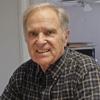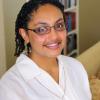April 7, 1965: A Roman Catholic nun was scheduled to speak at a Methodist religious service by way of a tape recording after a “misunderstanding” halted plans for her personal appearance. The nun, Sister Alexine of the Sisters of St. Joseph, taped an account of her experience as a volunteer nurse at Good Samaritan hospital in Selma, Ala. The recording was to be played during the offertory at the Sunday services at Central Methodist Church in downtown Detroit.
May 5, 1965: Charges made in Congress that “degeneracy, drunkenness and sex orgies were the order of the day” for civil rights demonstrators before, during and after the Selma-to-Montgomery march were given the lie this week by religious leaders who spoke as eyewitnesses. Among these was the only Roman Catholic nun who made the march. She is Sister Mary Leoline Sommer, a tall, serene Sister of Charity of the Blessed Virgin Mary stationed in Kansas City whose Route 80 sunburn has now turned to a tan. She went to Washington Monday on a trip paid for by friends to join eight others in trying to convince Representative William L. Dickinson (R. Ala.) that his charges of immorality were untrue.
March 24, 1965 Editorial: Even In The pluperfect North, not everybody is happy about the role played by clergy and religious in the Selma demonstrations. Diocesan papers across the country are getting indignant letters protesting their participation. In the chancery office at Kansas City, Mo., the device that receives and records telephone messages during off hours was jammed with verbal protests after the week end of the great Selma demonstration. For the Sisters, though, there was another kind of criticism. Many people apparently don’t believe that Sisters should be mixed up in things like this, that it isn’t proper for them.
Sr. Judith Mary: For the 100th time that day I wondered about what I was doing. Were we going to witness God’s hand in Selma? I was convinced I should go. I expected nothing. I wondered. I wondered at the Kansas City airport when we had our first encounter with the photographers and at the St. Louis airport as we read the nation’s reactions to the death of the Rev. Mr. Reeb. I wondered at Atlanta when we were joined by more priests and Sisters, and four knapsack-carrying ministers from Connecticut. I wondered as we flew through clouds over Alabama, and when I glimpsed a long red country road and thought of To Kill a Mockingbird.
The voting rights demonstrations led by Dr. Martin Luther King Jr. 50 years ago in Selma, Ala., are among the most significant events of the modern civil rights movement. They successfully rallied supporters of racial justice behind the need for government action to protect the right to vote long denied to African-Americans. The Voting Rights Act, described by many as the single most important piece of legislation passed by Congress in American history, was a direct result of the Selma protests.
GSR Today - A rehabilitation center on outskirts of Ho Chi Minh City attends to needs of children with severe disabilities. Led by Catholic sisters, the center provides life long service to the needy.
"Just as untying is harder than tying, it is difficult to take what we know and are so sure of and to un-know it. One day the cloud does it for us."
GSR Today - Much has been written about anti-nuclear activist Sr. Megan Rice since she was incarcerated last year. A new lengthy and in-depth article appeared this week in The New Yorker that explores why Rice and two other people – Christian pacifist Gregory Boertje-Obed and Catholic layman Michael Walli – broke into the Y-12 National Security Complex in Oak Ridge, Tennessee, in July 2012.
It is true that in apostolic religious life we seek to live a balance between ministry and contemplative prayer – one feeds the other. We bring our ministry to prayer and prayer supports us in our ministry. This is the ideal. If we are not careful, though, our ministry can overtake the contemplative space in our lives. Our world is in such great need. There are more injustices, marginalized and oppressed peoples, and persons in abject poverty than I can list in this article. And it is true that it is our moral obligation to address these needs in the ways we are able. But in so doing we cannot afford to lose our center, our foundation, our very souls.
Sr. Barbara Moore wanted to see the film "Selma," but by herself "because emotionally I knew it would probably be impactful." So the Sister of St. Joseph of Carondelet sat alone in a St. Louis theater in January and watched the movie about the events of 50 years ago this March – the voting rights marches and protests led by the Rev. Martin Luther King Jr. in Selma, Alabama.


